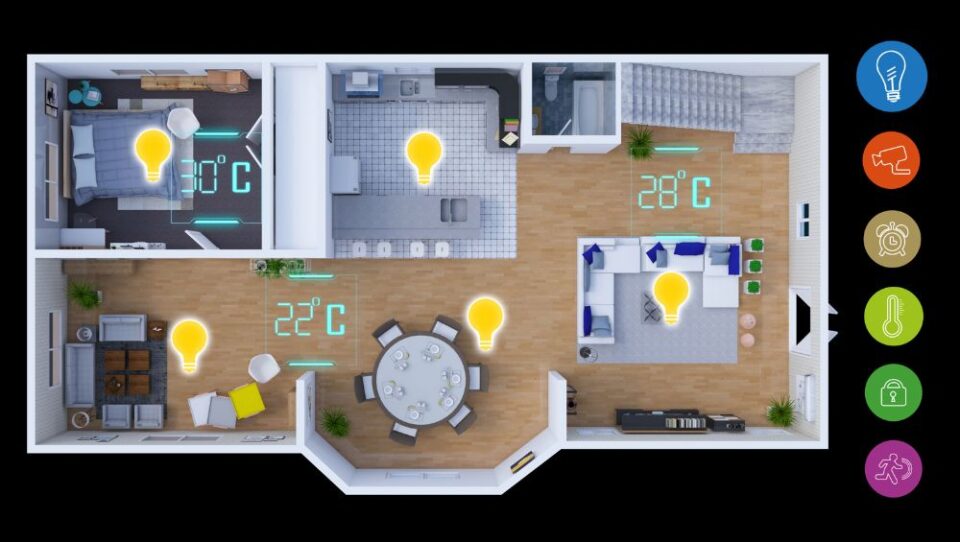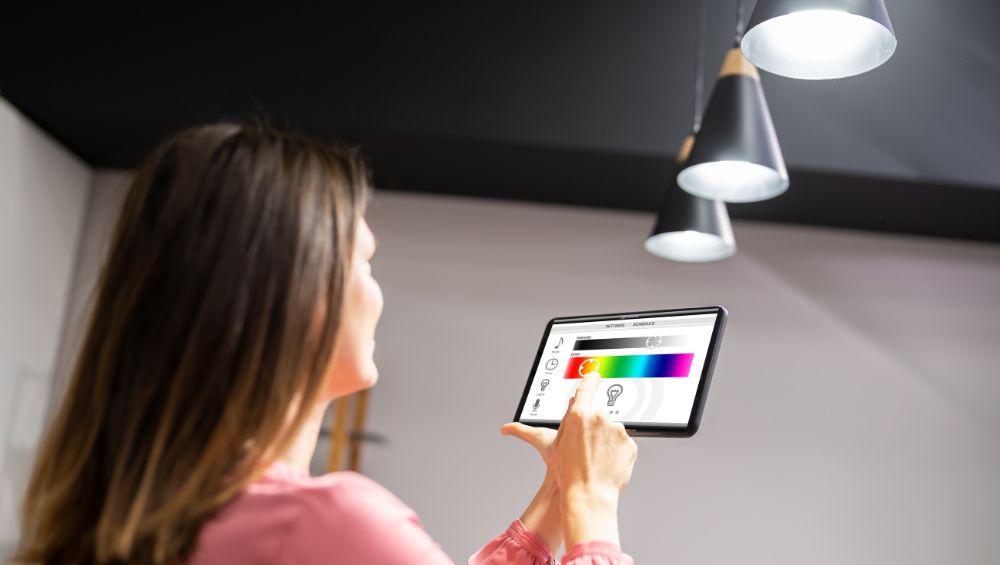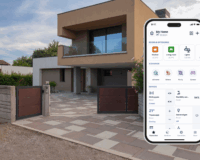In a world that’s constantly evolving and striving for sustainability, the integration of technology into our daily lives has become more essential than ever. Smart lighting and energy saving systems are at the forefront of this technological revolution. Not only do they enhance our quality of life, but they also play a significant role in conserving energy and reducing our carbon footprint. In this article, we will explore the myriad benefits of smart lighting and energy-saving systems, shedding light on how these innovations are transforming the way we illuminate our world.
What is Smart Lighting and Energy-saving Systems?
Smart lighting and energy saving systems are advanced technological solutions designed to provide efficient, sustainable, and intelligent illumination. These systems leverage cutting-edge technology and automation to optimize energy consumption, reduce costs, and enhance the overall lighting experience. Let’s delve deeper into what these systems entail:
Smart Lighting
Smart lighting refers to lighting systems that can be controlled, customized, and automated through various devices and technologies. These systems often use Light Emitting Diode (LED) technology, which is highly energy-efficient. Here are key features and components of smart lighting:
-
- LED Bulbs: Smart lighting systems primarily use LED bulbs. LEDs are more energy-efficient and longer-lasting than traditional incandescent or fluorescent bulbs.
- Wireless Connectivity: These systems can be controlled wirelessly through smartphones, tablets, or dedicated control panels.
- Automation: Smart lighting allows for automation through timers, motion sensors, and programming, enabling lights to turn on and off based on schedules or presence detection.
- Dimming and Color Control: Users can adjust the brightness and color temperature of the lights, creating customized lighting environments for various activities.
- Voice Control: Integration with voice assistants like Amazon Alexa, Google Assistant, or Apple HomeKit enables voice-activated control.
- Remote Access: Smart lighting can be controlled remotely, allowing users to manage their lighting from anywhere with an internet connection.
Energy Saving Systems
Energy-saving systems encompass a broader range of technologies and practices designed to reduce energy consumption across various domains, not limited to lighting. Here are the primary components and features of energy-saving systems:
-
-
- Energy Efficient Appliances: These systems encourage the use of energy-efficient appliances and equipment in homes and businesses. This includes LED lighting, energy-efficient HVAC (heating, ventilation, and air conditioning) systems, and ENERGY STAR-rated appliances.
- Energy Management Systems: These systems provide real-time monitoring and control of energy consumption in residential, commercial, and industrial settings. They use sensors and data analytics to identify energy wastage and improve efficiency.
- Renewable Energy Integration: Energy-saving systems often involve the integration of renewable energy sources like solar panels and wind turbines to generate clean, sustainable power.
- Smart Thermostats: In addition to lighting, smart thermostats are crucial for controlling HVAC systems. They enable users to program temperature settings, adjust them remotely, and optimize heating and cooling to save energy.
- Home and Building Automation: Beyond lighting and HVAC, these systems often incorporate automation for managing various aspects of homes and buildings, such as smart blinds, smart power outlets, and smart appliances.
- Behavioral Changes: Energy-saving systems also promote behavioral changes, encouraging users to adopt energy-efficient practices, like turning off lights and appliances when not in use.
-
The Benefits of Smart Lighting and Energy-Saving Systems

1. Efficiency and Energy Savings
1.1 Reduced Energy Consumption
One of the most apparent benefits of smart lighting and energy-saving systems is their ability to reduce energy consumption significantly. Traditional incandescent bulbs and fluorescent lights are notoriously inefficient, converting a large portion of the electricity they consume into heat rather than light. In contrast, smart LED bulbs and energy-efficient lighting systems use up to 80% less energy while providing the same level of illumination. This translates to substantial energy savings and lower electricity bills for homeowners and businesses alike.
1.2 Adaptive Lighting Controls
Smart lighting systems come equipped with various features that allow for adaptive lighting controls. These systems can be programmed to automatically adjust the brightness and color temperature of the lights throughout the day, aligning with the circadian rhythm. This not only enhances the comfort and well-being of the occupants but also optimizes energy consumption by using less artificial light when natural daylight is sufficient.
1.3 Motion Sensors and Timers
Another way smart lighting systems contribute to energy efficiency is through the integration of motion sensors and timers. Lights can be programmed to turn on only when a room is occupied and automatically turn off when no motion is detected. Timers can also be set to control the duration of lighting, ensuring lights are not left on unnecessarily. This level of automation reduces energy waste and the environmental impact.
2. Cost Savings
2.1 Lower Utility Bills
Smart lighting and energy-saving systems may require an initial investment, but they offer long-term cost savings that far outweigh their upfront costs. By reducing energy consumption, homeowners and businesses can experience a substantial decrease in their utility bills. Over time, these systems pay for themselves, making them a wise financial choice.
2.2 Extended Bulb Lifespan
Traditional incandescent bulbs have a relatively short lifespan, often needing to be replaced every year or two. On the other hand, smart LED bulbs can last up to 25,000 hours or more, which means fewer replacements and less money spent on new bulbs. This extended lifespan not only saves money but also reduces waste, contributing to a more sustainable environment.
3. Environmental Impact
3.1 Reduced Carbon Footprint
The environmental benefits of smart lighting and energy-saving systems are substantial. The reduced energy consumption directly translates to a decreased carbon footprint. As fewer fossil fuels are burned to generate electricity, less greenhouse gas emissions are released into the atmosphere, ultimately helping combat climate change.
3.2 Less Light Pollution
Smart lighting systems can also address the issue of light pollution, which negatively affects both the environment and human health. These systems can be programmed to emit light only where and when it is needed, minimizing the spread of artificial light into the night sky. By reducing light pollution, we can protect the natural habitat of various species, conserve energy, and improve the quality of life for those living in urban areas.
4. Enhanced Comfort and Convenience
4.1 Personalized Lighting
Smart lighting systems offer the flexibility to customize lighting to suit individual preferences and needs. With the touch of a button or a voice command, users can adjust the brightness, color temperature, and even create preset lighting scenes for different activities such as reading, working, or relaxing. This level of personalization enhances comfort and well-being.
4.2 Remote Control
The convenience of remote control is another significant advantage of smart lighting systems. Users can control their lighting from their smartphones or other devices, even when they are away from home. This remote control capability is not only convenient but also enhances security by allowing users to create the appearance of an occupied home when they are away.
4.3 Integration with Smart Home Ecosystems
Smart lighting systems can seamlessly integrate with other smart home devices and ecosystems. This integration enables users to create sophisticated automation routines. For example, lights can be programmed to turn on when a security camera detects motion or when the front door is unlocked. This not only adds convenience but also enhances the overall functionality of a smart home.
5. Health and Well-Being
5.1 Circadian Lighting
Smart lighting systems can support human health by mimicking natural daylight patterns. By adjusting the color temperature of the lighting throughout the day, these systems can help regulate our circadian rhythms, improving sleep patterns and overall well-being.
5.2 Reduced Flicker and Glare
LED lighting, especially in its smart form, is known for its reduced flicker and glare, which can be a source of discomfort and even trigger health issues in some individuals. By reducing flicker and glare, smart lighting systems create a more comfortable and healthier lighting environment.
Conclusion
Smart lighting and energy-saving systems are at the forefront of the sustainable technology revolution. Their numerous benefits, including efficiency and energy savings, cost savings, environmental impact, enhanced comfort and convenience, and positive effects on health and well-being, make them a smart choice for both homeowners and businesses. By adopting these innovative lighting solutions, we not only reduce our carbon footprint and lower our utility bills but also pave the way for a brighter and more sustainable future. As technology continues to advance, smart lighting systems will play an increasingly significant role in improving our lives and protecting the environment.






